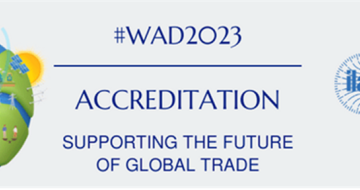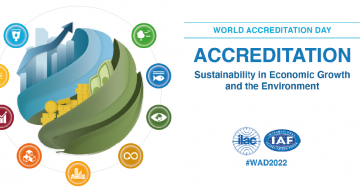Table of Contents
Children love toys because they provide tremendous fun. Toys are also essential for their development.
However, children are vulnerable consumers, as they are often unable to assess the dangers. That is why toy safety is so important.
In the past, each European country enforced its own legislation on toy safety. In 1989, the European Commission decided to establish common standards for all member states. In doing so, it provided an answer to consumers' growing concern, and adapted to the latest trends relating to "hip and trendy" toys, which feature new materials and processes.
Regulations concerning toy safety
Toys must comply with the safety regulations in the on products and services safety.
At a European level, toy safety is governed by the Toy directive 2009/48/EC, which enforces common legislation in all member states in the European Union.
This directive has been transposed into Belgian law by two royal decrees:
- the Royal Decree of 19 January 2011 on the safety of toys
- the Royal Decree of 19 January 2011 on the recognition of conformity assessment bodies for toys
The first decree deals with the safety of toys and establishes the general safety requirements and the more specific conditions for placing toys on the market.
The second decree concerns the bodies charged with toy monitoring.
Which toys are affected by the regulations?
The official definition of a toy is "any product designed or intended whether or not exclusively to be used for play by children under the age of 14". The main purpose of the product is thus play.
The following products are not concerned by the toy legislation:
- Decorative objects for parties and festivities.
- Products intended for collectors, provided that the product or its packaging clearly and legibly states that it is intended for collectors aged 14 years and older (e.g.: scale models, kits for the construction of complex scale models, folkloric and decorative dolls, historical replicas of genuine firearms, etc.).
- Sports articles, including roller skates, in-line skates and skateboards intended for children weighing more than 20 kg.
- Bicycles with a maximum saddle height of over 435 mm, measured as the vertical distance from the ground to the top surface of the saddle, with the saddle placed in a horizontal position and adjusted to the minimum insertion level.
- Scooters and other means of transport designed for sport and intended for use on public roads or paths.
- Electrically-propelled vehicles intended for use on public roads, paths, or pavements.
- Water sports equipment intended for use in deep water, and equipment intended for teaching children to swim, such as swimming seats and swimming aids.
- Puzzles with more than 500 pieces.
- Guns and airpressured guns, except for water pistols, and bows for archery of more than 120 cm in length.
- Fireworks, including primer cartridge not specifically designed for toys.
- Products and games using sharp-pointed projectiles, such as metal-tipped darts.
- Functional educational products, such as electric ovens, irons and other functional products powered by a nominal current of more than 24 volts, and sold exclusively for use under adult supervision for educational purposes.
- Products which are intended for educational purposes in schools and other educational settings, such as scientific material, under the supervision of an adult instructor.
- Electronic equipment, such as personal computers and games consoles, which are used to access interactive software, and associated peripherals, provided such electronic equipment or associated peripherals are not specifically designed and intended for children and have no entertainment value, such as specially-designed personal computers, keyboards, joysticks or steering wheels.
- Interactive software, intended for leisure and entertainment, such as computer games, and their storage devices (e.g., CDs).
- Childcare items, such as dummies.
- Attractive lighting for children.
- Electrical transformers for toys.
- Fashion accessories for children, which are not intended for play.
- Play equipment intended for public use in playgrounds.
- Automatic game machines intended for public use, whether or not coin-operated.
- Toy vehicles with a combustion engine.
- Steam-operated toy engines.
- Slings and catapults.
- Pseudo toys.
For more information on other children's articles see the pages on
- childcare articles;
- products with a misleading appearance.
Main principles of toy safety regulations
Obligations for economic operators
The regulations make it possible to:
- increase the responsibility of the various economic operators for the safety of toys (all operators are involved, but each according to their own role within the supply chain);
- guarantee the traceability of the toy supply chain;
- ensure better collaboration between these operators and the Belgian or foreign market surveillance authorities. This may involve proactive or on request collaboration with the relevant authorities of all EU countries, whether for the transfer of documentation (in the language of the requesting authority) or for taking appropriate measures in order to limit the risks.
Internal production monitoring
Manufacturers must take all appropriate measures in order to ensure that the manufacturing process and its monitoring guarantee the compliance of the manufactured product with the relevant safety regulations.
Technical documentation
The technical documentation must contain all relevant data and a detailed description of the methods (safety evaluation, internal production monitoring procedure, etc.) used by the manufacturer in order to guarantee the conformity of toys with the requirements.
Safety evaluation
Before launching a toy on the market, manufacturers must conduct a safety evaluation of the toy. They must therefore conduct an analysis of the possible chemical, physical and mechanical hazards that the toy may present and of the consumer's potential exposure to such hazards.
Safety information
Manufacturers and other operators must ensure that the toy is provided with safety information in the language(s) that will be easily understood by the consumer, as determined by the appropriate member state. In Belgium, this means the language(s) of the linguistic region.
EC declaration of conformity
This document, which must be continually updated, certifies that the toy’s safety requirements have been met. It states that the harmonised standards for the product have been respected.
In order to demonstrate that a toy meets the essential safety requirements and that the CE marking may be applied, the toy manufacturer may choose between two different procedures:
- self-certification;
- EC-type audit by a registered authority.
Chemical requirements
Toys and toy components shall not contain carcinogenic, mutagenic or toxic substances. From a chemical perspective, toys must respect:
- the criteria for classification and labelling of substances and mixtures under the Globally Harmonised System of Classification and Labelling of Chemicals (GHS);
- the REACH regulation concerning the registration, assessment and authorisation of chemical substances.
Which conditions must a toy meet in order to be supplied on the market?
In order to be supplied on the market, the toy must satisfy the following conditions:
- comply with the essential safety requirements;
- carry the CE marking;
- the name and/or company name and/or brand and address of the manufacturer and/or importer are stated on the toy;
- be provided together with clearly legible and appropriate instructions in order to limit risks when in use. These warnings and instructions must be mentioned in the language or languages of the linguistic region in which the toys are placed on the market.
In the case of small toys and toys made up of small components, these details may be provided on the packaging, a label or a document.
What is the role of the FPS Economy when it comes to toy safety?
The FPS Economy organises:
- market inspections,
- technical analyses, and
- information campaigns for manufacturers and importers.

